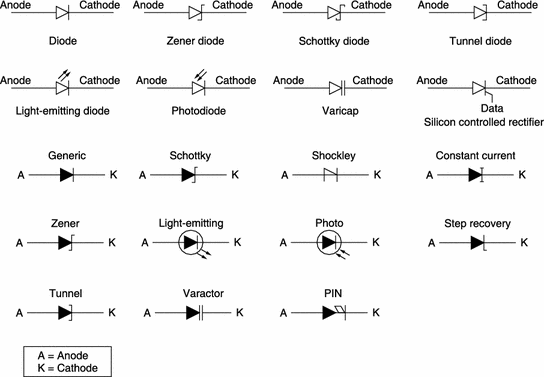How do diodes work and what are their main applications?

Diodes are electronic components that allow current to flow in only one direction while blocking it in the opposite direction. They are typically made of semiconductor materials such as silicon or germanium. The operation of a diode relies on the properties of a junction formed between two different types of semiconductor materials: the p-n junction.
Here’s a simplified explanation of how diodes work:
- P-N Junction: A diode consists of two regions: the P-type semiconductor (with an excess of positive charge carriers, or “holes”) and the N-type semiconductor (with an excess of negative charge carriers, or “electrons”). When these regions are brought into contact, they form the p-n junction.
- Forward Bias: When a positive voltage is applied to the P-side of the diode and a negative voltage to the N-side (forward bias), the excess holes from the P-side and excess electrons from the N-side are pushed toward the junction. This creates a conductive path, allowing current to flow through the diode with low resistance. In other words, the diode is “on” and allows current to pass through.
- Reverse Bias: When a negative voltage is applied to the P-side of the diode and a positive voltage to the N-side (reverse bias), the excess charges are pushed away from the junction, creating a depletion region with no free charge carriers. In this state, the diode acts as an insulator, preventing the flow of current. Only a very small reverse current, called leakage current, flows due to minority charge carriers. In other words, the diode is “off” and blocks current flow.
Diodes have various applications based on their characteristics:
- Rectification: Diodes are widely used in rectifier circuits to convert alternating current (AC) to direct current (DC). They allow current to flow in only one direction, which is crucial for converting the changing polarity of AC to a unidirectional flow.
- Voltage Regulation: Zener diodes are designed to operate in reverse breakdown voltage regions. They are used for voltage regulation and stabilization in electronic circuits, protecting sensitive components from voltage spikes.
- Signal Modulation: Diodes are used in signal modulation circuits, such as amplitude modulation (AM) and frequency modulation (FM). They enable the mixing and manipulation of different signal frequencies.
- Logic Gates: Diodes play a vital role in digital electronics. They are used in logic gate circuits, such as AND, OR, and NOT gates, to perform logical operations and control the flow of signals.
- Overvoltage Protection: Transient voltage suppression diodes (TVS diodes) are used to protect electronic components from voltage spikes and transient overvoltage events.
- Light Emission: Light-emitting diodes (LEDs) are specialized diodes that emit light when current flows through them. They are used for various lighting applications, display panels, indicators, and even in optoelectronic communication systems.
These are just a few examples of the many applications of diodes. Their unique electrical properties make them fundamental components in a wide range of electronic circuits and systems.
mixos Edited answer 22 June, 2023

